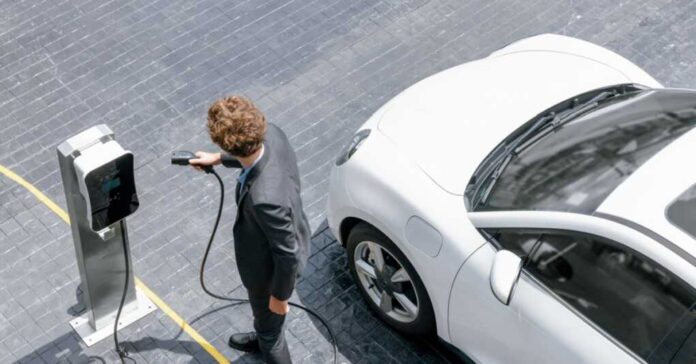
The Biden administration’s push for EV domination is not just unrealistic and unsustainable. It is also a “direct wealth transfer,” according to some experts.
Brent Bennett, a policy director for Life:Powered, suggests that costs for electric vehicles are shouldered by those who prefer gas-powered vehicles and that the increased costs of these traditional cars now balance the costs of EV subsidies.
Bennet says the $7,500 federal tax credit for EVs is just a tiny part of the government’s overall support for EV production. He explained that when factoring in the shared infrastructure costs and zero-emission vehicle mandates, which impose additional expenses on automakers, the federal fuel economy regulations alone effectively subsidize each EV by approximately $20,000. Considering all these factors, Bennett estimated that each EV receives nearly $50,000 in subsidies.
Bryan Dean Wright, host of the podcast “The Wright Report,” suggests that one case in point highlighting the unsustainability of EVs for middle-class Americans can be seen in California in the face of Governor Gavin Newsom’s push to ban the purchase of new gas-powered vehicles by 2035.
With so many Californians now purchasing EVS, utility prices have skyrocketed in the Golden State, an unintended consequence that hurts middle- and lower-class Americans the most. Wright explains, “The burden of this revolution is it is fundamentally a tax on the working class and on the middle class.”
However, higher electricity costs aren’t the only problem that EVs are causing in California. Wright says that California is sacrificing the reliability of its electrical grid for the ability to charge EVs, leading to brownouts and blackouts.
There are three levels of charging for EVs. Level one uses an outlet at home. Level two requires a $2000 to $4000 installation of a special charger for the house, and level three requires chargers found at public charging stations.
Wright warns that level-one charging uses as much power as four homes. For example, Bennett warns that if everyone in a typical neighborhood of around eighty homes had EVs and charged them overnight, it would exceed that neighborhood’s ability to generate enough electricity four times over.
He explains that charging a single EV with a fast charger uses as much electricity as a grocery store. If a charging station offers four EV chargers, all used at once, it’s the equivalent of using enough electricity to power a larger store like Walmart.
Bennett says that EV advocates hope that by pouring money into the technology, batteries will improve and, subsequently, the electricity demands for charging them will decrease. As a former battery engineer, however, Bennett warns that this is not the case with energy technology in general, especially not battery technology.
Calling the EV push one of the “biggest energy blunders” ever made, Bennett notes that a decade, the generally agreed-upon timeline for the push to be complete, is not nearly enough time to improve battery technology in any meaningful way. Additionally, he points out that battery technology takes ten years to commercialize and an additional ten years to “mature to where it has wide market penetration.”
In the meantime, the economic pinch will be felt by Americans who must meet rising energy costs caused by EV users and overly inflated prices for new and used gas-powered vehicles.
In January, The Biden administration released a statement highlighting “significant progress” in promoting EV adoption. According to the statement, EV sales have increased dramatically, with over four and a half million EVs now on the road. Additionally, the cost of EV ownership has allegedly decreased by more than 20% compared to a year ago. The number of publicly available charging stations has risen by over 70%, totaling 170,000 nationwide. This “progress” puts the country on track to achieve the administration’s goal of deploying 500,000 chargers by 2026, four years ahead of schedule.
But experts warn that in the end, it won’t even matter. Researchers have run models that conclude EVs contribute little to stopping climate change. Instead, he says, the only thing EVs will do is make everyday Americans pay more in energy costs and at car dealerships.
In other words, research confirms that EVs are far too costly and unsustainable, yielding only negligible results for an overly exaggerated problem. And the ones that will suffer the most are, as always, those who can least afford to do so.










